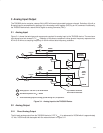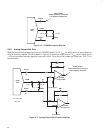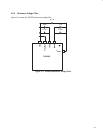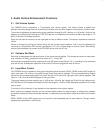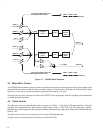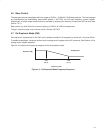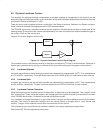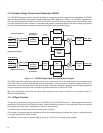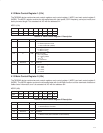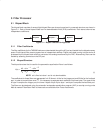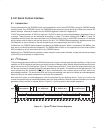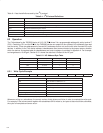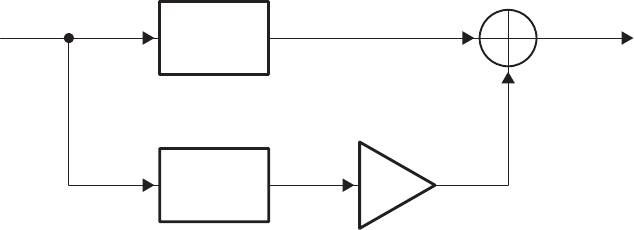
4−5
4.9 Dynamic Loudness Contour
The necessity for applying loudness compensation to playback systems to compensate for the fact that the ear
perceives bass and treble less audibly at low levels than at high ones has been established since the first data was
published by Fletcher and Munson in 1933.
There are many equal-loudness contours in publication, like Steven’s contours, Robinson and Dadson contours.
Some have even reached the acceptance level of ISO recommendation.
The TAS3002 device has a simplified loudness contour algorithm that diminishes the effect of weak bass at low
listening levels. Since contour has volume level dependency, the user must define the relation between the gain of
the contour circuit and the volume level.
Figure 4−3 is a block diagram of this circuit.
Volume
Biquad Gain
Figure 4−3. Dynamic Loudness Contour Block Diagram
The loudness contour is activated by sending an activation command via I
2
C from an external device. Optionally, a
contour gain command can be sent by an external device to provide tracking with the system volume control.
4.9.1 Loudness Biquads
Loudness biquad filters for the left and right channels are independently programmable via I
2
C. Their subaddresses
are 21h and 22h, respectively. The digital filters are written as five 24-bit (4.20) hex coefficients for each channel.
4.9.2 Loudness Gain
Loudness gain values for the left and right channels are independently programmable via I
2
C. Their subaddresses
are 23h and 24h, respectively. The gain values are written as one 4.20 hex coefficient for each channel.
4.9.3 Loudness Contour Operation
When the frequency of the loudness contour is determined, a digital filter must be developed. Then, the gain of the
filter is determined. These values are placed in the storage area of the system controller (microcontroller) and sent
to the TAS3002 device when it is desired to activate the loudness contour.
If it is necessary to change the frequency or gain of the contour, new gain and filter coefficients are sent by the system
controller. This function is performed normally when the volume control is changed (that is, more volume, less
contour). The gain of the loudness contour filter then tracks the volume control.
The loudness contour biquad filters are provided in addition to the seven equalization biquad filters.
See Section NO TAG for programming instructions.



